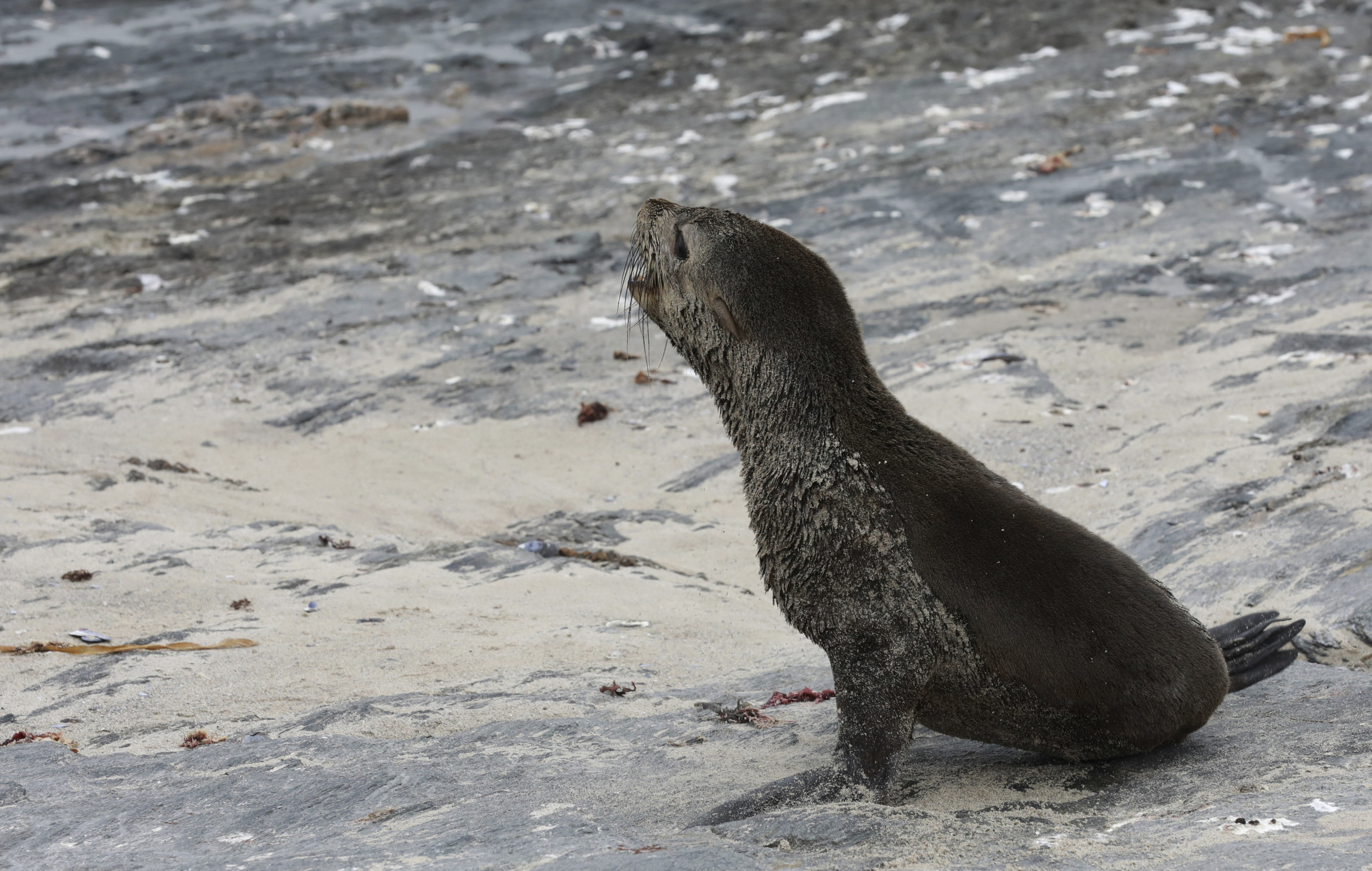Scientist in South Africa believe they have successfully identified the first time the rabies virus has spread to sea mammals, in this case among 24 dead Cape fur seals.
The bodies of the sea mammals were discovered in various locations across the west and south coast of the country, according to state veterinarian Dr. Lesley van Helden.
Rabies infects mammals and can be passed on to people. The virus is almost always fatal once symptoms appear and it spreads via saliva, usually through bites but also sometimes when animals lick and groom each other.
The virus is routinely observed in land mammals such as raccoons, coyotes, foxes, jackals and domestic dogs. But it has never before been recorded spreading between marine mammals, van Helden and other experts said this week.
Nardus Engelbrecht/AP
Authorities in South Africa first discovered rabies in Cape fur seals in June after a dog was bitten by a seal on a Cape Town beach. The dog became infected with rabies, prompting rabies tests on brain samples from 135 seal carcasses that researchers had already collected since 2021. Around 20 new samples also were collected, and more positives have come back from further tests.
“So, it’s basically established itself in the seal population and it’s being maintained by them biting each other,” van Helden said.
The only other known case of rabies in a sea mammal was in a ringed seal in Norway’s Svalbard islands in the early 1980s. That seal had likely been infected by a rabid arctic fox, researchers said, and there was no evidence of rabies spreading among seals there.
Scientists are trying to work out how rabies was passed to the seals, whether it is spreading widely among their large colonies and what can be done to contain it.
“It’s all very, very new,” said Greg Hofmeyr, a marine biologist who studies seals in South Africa. “A lot of research is required … there are a lot of unknowns here.”

Nardus Engelbrecht/AP
There are approximately 2 million seals migrating back and forth between South Africa, Namibia and Angola along Africa’s south and west coast. The genes of the rabies virus found in the South African seals matched the rabies in black-backed jackals found in Namibia, where the wolflike animals hunt seal pups on the coastline.
The study also showed rabies was being transmitted between seals, because most of the virus sequences were closely related, she said.
“So, it’s basically established itself in the seal population and it’s being maintained by them biting each other,” van Helden said.
Cape fur seals live in close proximity to people in South Africa, especially on beaches around the city of Cape Town. The city has issued warnings to locals, said Gregg Oelofse, Cape Town’s head of coastal and environmental management.
Authorities had been mystified for the past three years by reports of excessively aggressive seals and an increase in seal attacks on people, some of whom had been bitten. However, so far no human cases of rabies have been recorded.
One of the positive rabies tests was on a seal carcass collected in August 2022, meaning rabies had been in the seal population for at least two years, Oelofse said.
“It’s been here for a while longer than we’ve known about it,” he said.
Oelofse said that city authorities had started vaccinating the small numbers of seals at two popular Cape Town harbors, where they are considered an attraction.
This article includes reporting from The Associated Press
The post Scientists Identify First Known Outbreak of Rabies in Seals appeared first on Patabook News .

